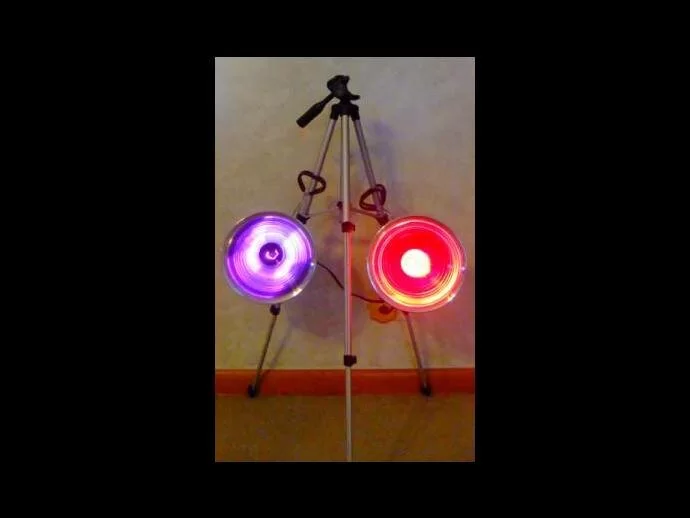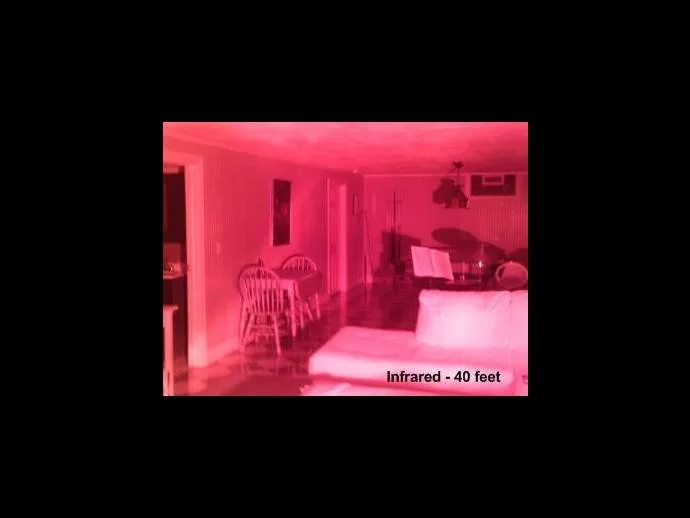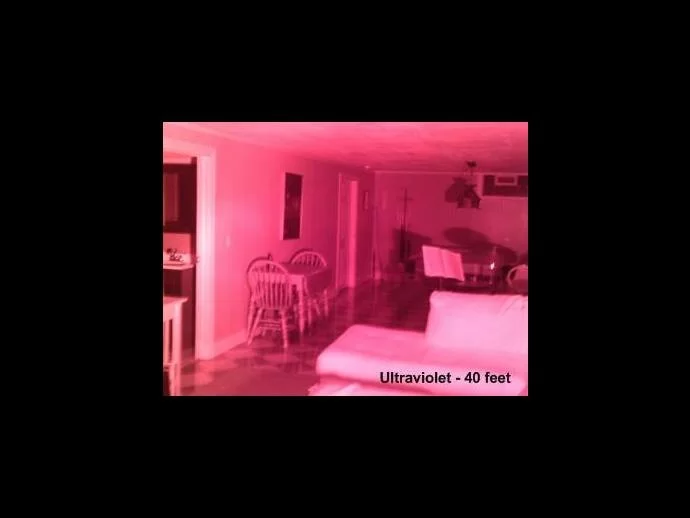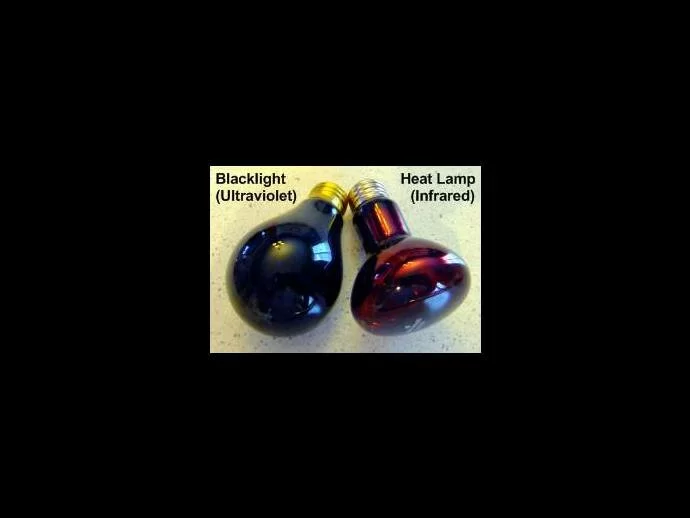Experiments, exploration and explanation of lighting for full spectrum cameras...
Full spectrum lighting used for illumination of full spectrum cameras for ghost hunting has been confusing to say the least. What lighting should be used? What wavelength or band of light works best? Is there a range of light that is best to capture the photos of ghosts? We'll explore all this in this article about full spectrum lighting.
Full Spectrum Lighting: AC Versus DC
Full spectrum lighting to illuminate the darkness to invisible spectrums can be achieved using different types of lighting. Many ghost hunters are aware of Infrared (IR) light sources for video cameras. Recently, some ghost investigators have been creating battery-powered lighting that incorporates both Infrared and Ultraviolet LED light bulbs specifically for full spectrum cameras. We want to explore another alternative: Incandescent full spectrum lighting utilizing A/C power. Having battery powered full spectrum lighting, or even IR lighting, is wonderful to have as an option for where A/C lighting is not possible.
A/C powered full spectrum lighting has a distinct advantage over battery-powered LED lighting, that being stronger illumination to the eye of the full spectrum ghost hunting camera. Low watt, A/C bulbs can easily brighten an area as long as 50 feet or more. Add a spot light-type bulb with greater wattage, and you have a powerful light source that can broadcast rays even further. Like the LED type full spectrum lighting that is popping up at the time of this article, incandescent bulbs can be used to delineate a range of light for the camera to see.
If we choose to use an Infrared light, primarily the Near Infrared range of the electromagnetic spectrum will be visible to the full spectrum camera. Most of the visible light will be blocked out by the red tinted glass of the IR bulb itself. Similarly, by using an incandescent black light bulb, most of the visible light is also filtered out but the dark blue colored glass allows the emission of both Ultraviolet and Near Infrared light. This gives the investigator of the full spectrum camera the option of using the type of lighting to explore the invisible spectrum of light he or she prefers. The user must be aware that these light bulbs should be used in sockets with heat shields. They do become very hot.
The Experiment: Full Spectrum Lighting Photos (below)
We compared the light emitted by both the UV (75 watt black light) and IR (50 watt heat lamp) bulbs. Both bulbs illuminated the 40' long room quite nicely for our 10.1 mp full spectrum camera.
Looking at both bulbs on, the black light bulb looks purple and the heat lamp bulb looks red. These are mounted in clamp lights and can be used in conjunction with one another, depending on whether or not we prefer just Infrared or the combination of Ultraviolet with Infrared.
Full Spectrum Lighting: About Light Bulbs
An incandescent black light bulb to be used for full spectrum lighting is similar to the normal light bulb used in lighting our homes. In fact, regular incandescent light bulbs put out a full spectrum of light: some UVA, visible light and some Infrared (they get hot). The black light bulb uses special light filters to absorb the light from the heated filament, capturing most of the visible light but not the Infrared (heat) or the UVA. It is the UV light that causes posters and other things to fluoresce - glow when exposed to black lights.
Infrared light bulbs are used to create heat with an internal reflector, coupled with a red filter to minimize the emission of visible light. They should be used in a ceramic socket (instead of plastic) to withstand the heat. For ghost hunting, use a lower watt Infrared bulb (50 watts) to reduce the amount of heat generated by the light. Infrared lights are used to warm reptile cages and can easily be found at most pet stores. When choosing a black light bulb, the fluorescent tube-type will not work as well as the good old incandescent bulb. (By the way, there are incandescent light bulbs called "full spectrum bulbs," but they are for reproducing light that appears similar to natural light. They are used for artists and photographers to work with.)
Full Spectrum Lighting: Illuminating What You Want, Eliminating What You Don't Want
Some makers of full spectrum cameras claim that the camera must have the visible spectrum filtered out, otherwise, the white light will "wash out" the UV and IR light. We do not feel this is true and feel it best to allow the camera to be able to see as much as possible. A true full spectrum camera has the sensor unfiltered and wide-open. However, if an investigator chooses to focus on a certain type of light for ghost photography, then we believe that choosing the correct light source for dark environments will filter the camera's eye accordingly. In other words, the true full spectrum camera will be able to see the wavelengths of light emitted by the light source itself.
In Wavelengths of Light, Where Are Ghosts Found?
What light source is working best for ghost investigation, Ultraviolet or Infrared? We are seeing evidence that ghosts are being captured by cameras in shorter wavelengths, meaning the Infrared spectrum. More experimentation needs to be done, but it does appear that more visible ghost manifestations are occurring within the Near Infrared and visible spectrum. Full spectrum cameras that have the visible spectrum filtered but allow both the IR and UV bands to be seen by the camera sensor have also been capturing some intriguing images. In our opinion, this does not prove that ghosts manifest in the Ultraviolet light. To us, it simply suggests that ghosts can appear in the Infrared spectrum; most ghost investigators are not using full spectrum lighting. The typical investigator is using only IR lighting but achieving good results.
To learn more, visit...
Full Spectrum Camera
Full Spectrum Camera Ghost Pictures







